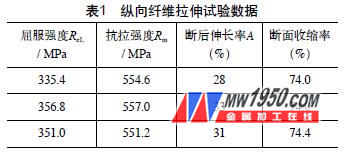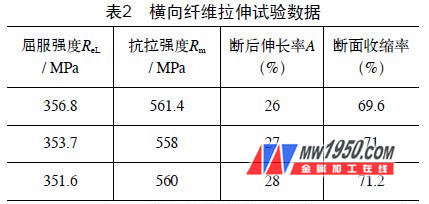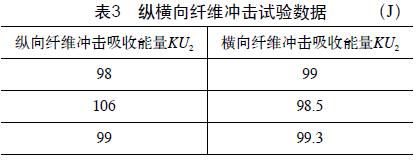Effect of fiber structure on mechanical properties of forgings
The segregation of the ingot after forging is improved, and the bubbles and loose structures inside the ingot are compacted and welded, the metal is denser, and the mechanical properties are improved.
As the shape of the ingot changes, the metal flows in the inside of the ingot. Oxides, sulfides and other impurities existing between the grains form a regular directional fiber structure inside the metal, which gives the direction of the mechanical properties of the metal. Sexuality, showing that the mechanical properties along the fiber direction are better than the vertical fiber direction.
Problem raised
Because of this difference, the direction of the metal fiber should be considered in the preparation of the forging process, which makes the forging process more cumbersome, increasing the labor intensity of forging and workers. For large forgings that need to be forged with steel ingots, the directionality of the mechanical properties of the metal is more obvious. However, there is little difference in the directionality of the mechanical properties of small forgings formed from profiles. There is no data in this regard. If we do not consider the directionality of the mechanical properties of the metal, whether it will affect the service life of the parts, we do not have experience in this area.
Therefore, through the comparison of the longitudinal and transverse mechanical properties of the forging fiber structure, after obtaining the data, the difference between the longitudinal and transverse mechanical properties of the forging fiber structure is compared, which provides a basis for considering whether the fiber structure is considered in the forging process.
2. Test process
In mechanical manufacturing, gears are one of the more typical parts. The working condition is more complicated, not only must have a certain surface contact strength, but also have a certain flexural strength and fatigue strength. We use the company's commonly used gear material 17Cr2Ni2Mo for process testing. The sawing machine is blanked and the blank specification is φ 100mm×150mm. The 240mm×200mm×25mm long flat square material is forged along the axial direction of the blank. The 240mm direction is the longitudinal fiber of the forging fiber, and the 200mm direction is the transverse fiber of the forging fiber. On the long flat material, three longitudinal tensile and impact specimens were taken by wire cutting, and three transverse tensile and impact specimens were used. The mechanical properties of the samples were processed according to the national standard size. The test data are shown in Table 1, Table 2 and Table 3.



3. Data analysis
The longitudinal fiber has a slightly smaller yield strength and tensile strength than the transverse fiber, and the longitudinal fiber has a slightly larger impact energy absorption than the transverse fiber, and the longitudinal fiber has a slightly higher plasticity than the transverse fiber. It can be seen that the difference in the longitudinal and transverse fiber structure properties of the forgings is small. This is because in the process of forging the steel ingot, only the total forging ratio is ≥4, the directionality of the fiber structure is more obvious, and the general steel mill does not reach such a large forging ratio when forging the steel ingot.
1. Product introduction
The coal-based net gas Granular Activated Carbon with high quality Anthracite as raw material, by block crushing production technology refined processing; the appearance is black particles. It has large pore specific surface area and specific volume, reasonable pore structure, good adsorption properties, high mechanical strength, good wear resistance, structural stability, small gas resistance, easy regeneration, low regeneration loss, low cost, not easy to break under high pressure and high temperature and other characteristics.
2. Application
a. The coal-based net gas granular Activated Carbon is mainly used for the purification of poisonous gas, waste gas treatment, purification of industrial and domestic water.
b. The coal-based net gas granular activated carbon is also used to chemical raw materials, pharmaceutical chemical synthesis gas, industrial gas, carbon dioxide and hydrogen for beverage, nitrogen, chlorine, hydrogen chloride, ethylene hydrocarbons, ozone, ethane, butane, cracking gas, inert gas, coal gas, coke oven gas, natural gas, purification of sulfide in flue gas. Purification and exhaust in atomic facilities.
c. The coal-based net gas granular activated carbon is applied to cigarette filter, decoration, indoor air purification (remove formaldehyde, benzene and other harmful gas), new furniture, cabinets / drawers / refrigerator, can also be placed inside the shoes to deodorization.
d. The coal-based net gas granular activated carbon used for biochemical, paint industry, underground sites, leather factories, animal breeding sites for air purification and deodorization.
3. Process
Coal-based granular activated carbon with high quality anthracite as raw material, it produced by high temperature steam, and by carbonization, activation, crushing and sieving process.
4. Transportation and Packing
Woven bag, lined with plastic film bags, each 25kg can also be packaged according to customer demand. The product should be placed in a cool and dry place during storage; When transportation, it prevents to mixed with hard materials, to prevent carbon particles broken that affecting the quality of packaging, to prevent breakage. To avoid leakage or mixed with debris; to avoid water, oil and fire.
Granular Net Gas Granular Activated Carbon
Granular Activated Carbon,Activated Carbon Price,Irregular Broken Carbon,Small Particles Activated Carbon
Ningxia YiFeng RuiDa Activated Carbon Co.,LTD , http://www.nxyfrdhxt.com